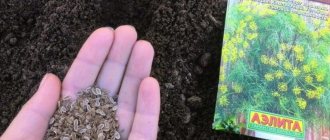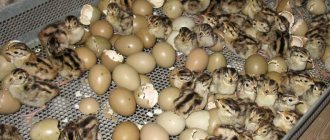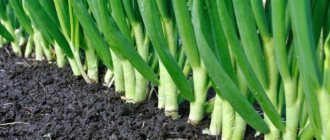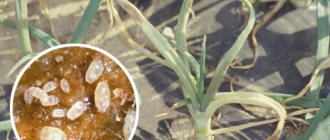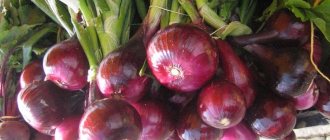Garden owners often experiment, planting different crops from year to year: vegetables, berries, spices, medicinal herbs and others. They all interact with the soil - they take nutrients from it and transfer their own. Proper alternation of plants in the same area replenishes the fertility of the land, reduces the risk of disease development and increases productivity.
Even ordinary onions are subject to the rules of crop rotation. What is advisable to plant after onions next year, and what is not recommended to plant, what plants will be the best companions for the onion family, you will learn from this article.
Rules for crop rotation when growing onions
Crop rotation implies proper alternation of crops, which reduces the risk of plant diseases and increases soil fertility.
Crops of the onion family feel good in non-acidic, moderately moist soil with good air permeability. The area where you plan to plant onions should be well heated by the sun. The culture does not like heavily shaded beds: lack of light has a bad effect on the size of the developing bulbs.
Onion beds should not be fertilized with fresh manure. The best fertilizers will be mineral fertilizers containing nitrogen, potassium and phosphorus and wood ash.
Reference ! Wood ash not only saturates the soil with useful substances, but also prevents the occurrence of fungal diseases.
If the soil is highly acidic, it is deoxidized by adding dolomite flour or slaked lime. Litmus paper will help determine the acidity level. To do this, dissolve a little earth in a glass of water and place an indicator in the solution. With increased acidity it will turn red.
Maintaining the soil in a consistently moist state will have a beneficial effect on crop yields, while excess moisture will lead to putrefactive processes.
Green manure
If mid-season or late-season onions were grown at the dacha, harvesting can begin at the end of August or beginning of September. The period of night frosts will soon begin, so it will not be possible to plant a new crop after the onions are harvested. To saturate the soil with useful substances and establish crop rotation, you can use green manure, which in everyday life is called “green doctors”. Their planting will allow:
- prevent weeds from appearing;
- fertilize the soil;
- fight pest larvae and pathogenic bacteria, which in turn will ensure cleansing and disinfection of the soil;
- carry out good loosening of the soil due to strong roots.
Related article:
Prepare a bed for carrots in the fall
For each site you need to select a specific green manure. This plant is classified into 5 varieties. The cruciferous family saturates the soil with phosphorus, sulfur, and organic matter, and protects plant crops from wireworms, root rot, and nematodes.
The Asteraceae family is a source of complex, difficult to decompose organic fibers. Cereals will help fill the soil with potassium, nitrogen and organic matter. Buckwheat will saturate the soil with the same microelements as cereals.
Important! When choosing green manure for onions, special attention should be paid to the cabbage family.
Why is it important to follow them?
The main reasons why crop rotation is necessary:
- Proper rotation of crops maintains soil fertility.
- The principle of crop rotation prevents the accumulation of pathogens and insect pests.
- Proper planting of crops helps improve soil health.
Planting the same plant in the same bed for several years will lead to soil depletion . In addition, pathogens characteristic of this crop will intensively develop in it.
Some plants not only do not deplete the soil, but, on the contrary, saturate it with nutrients. These plants include legumes, green manure and winter crops. After them, the soil is rich in nitrogen and other useful compounds.
Soil fatigue: causes
All vegetable crops need the same nutrients. If you plant them in the same bed every year, the soil will be depleted. Due to mineral deficiency, the site will be unsuitable for growing other crops. It will not be possible to save the situation by applying fertilizing in one season, since the infertile land will slowly replenish its reserves. It will take about 2-3 years to restore its nutritional properties.
Moreover, if you plant a vegetable in the same bed, there will be an accumulation of pathogenic bacteria and pest larvae in the soil to which it is susceptible. Thus, the bed will become contaminated, which will negatively affect the new crops planted. Their root system will be destroyed.
Related article:
Benefits of autumn planting onions
In addition, the risk of allelopathy in plants should not be excluded. There are many root systems in the soil that are in constant contact. Each root has certain chemicals. For one plant crop the neighborhood will be beneficial, but for another it will be disastrous. For example, if you plant cabbage near celery, the latter will protect it from whites.
Features of crop rotation after onions in the greenhouse and in open ground
Unlike crop rotation in open ground, where rotation occurs annually, greenhouse conditions allow one crop to be grown in one place for 2-3 years. But this is only possible with an annual change of the top layer of soil.
In renewed soil, plants do not suffer from lack of nutrition and are not affected by remaining fungal spores. Many gardeners have greenhouses that are heated and used year-round.
The greenhouse soil is dug up twice a year - in autumn and spring, and saturated with useful elements by adding organic fertilizers or a full range of minerals. After digging, the soil is disinfected by pouring a hot solution of potassium permanganate and spraying it with a solution of Fitosporin.
Reference ! "Fitosporin" is a contact fungicide and is used to prevent the development of fungal diseases.
Onions extract a lot of useful substances from the ground, and if they are planted in the same area again, the yield will noticeably decrease. In addition, after it, pathogenic spores and pest larvae accumulate in the soil. Therefore, it will not be possible to grow high-quality bulbs in open ground in the same place.
Preparing the soil before planting other crops
Thoughtful preparation for the next agricultural cycle helps create favorable conditions for growing other crops. After the autumn harvest of a demanding vegetable, complex compounds must be added to the open ground beds to replenish the deficiency of substances consumed by it. Fertilizers containing the main mineral components are applied in advance, in accordance with the recommended timing and strictly in the dosages indicated on the package.
Organic fertilizers of natural origin (chicken manure, cow manure, compost) are no less important. Even annoying weeds (comfrey, nettle, dandelion, burdock) will serve as a means to increase soil fertility if you prepare herbal infusions from them.
It is worth considering that any applied fertilizers do not begin to work immediately, while both a deficiency and an excess of elements negatively affect the development of plants
Despite the fact that onion infusions are often used when growing various vegetable crops as a means of prevention against pathogenic microorganisms and protection against pests, in practice its juicy heads and green feathers are also exposed to misfortune. During the entire active growing season, a plant may suffer from common fungal infections: peronospora (downy mildew), Alternaria, Fusarium, rust, various rot and viral diseases, which usually appear when agrotechnical requirements are not met.
Hoverflies and onion flies are considered specific pests for all bulbous plants, methods of combating which are described in detail in the article on our website.
Onion mites and nematodes living on fibrous root systems are difficult to detect visually due to their microscopic size
Beds with onions also attract rodents, which do not go far from their food supply unless they are driven away by force. You can get rid of burrowing inhabitants of the garden in various ways: using traps, repellers. If you decide to take the drastic route and use chemical poisons to protect the crop from unwanted “freeloaders”, make sure that children, pets and birds cannot reach the baits.
Does the earth need rest after onions?
The main rule: after onion crops, the land needs a three-year rest from plants of this family. The soil needs such a long rest for two reasons: soil depletion and the accumulation of diseases and pests.
What soil and conditions are needed for onions?
Onions can be grown on different soils; agricultural technology will vary in each specific case. For example, on sandy and sandy loam soils, onions can be sown earlier. The advantage of these soils is that during the rainy season, the spicy vegetable does not rot in them and retains its ideal presentation.
But a feature of growing in this case will be the need to water more often; all the sand is not able to retain moisture for a long time. Fertilizing will also need to be applied at shorter intervals due to the fact that the fertilizer is washed out more quickly from such soil.
In clay soils, due to their high density, onions ripen later. The crop will require more care due to the appearance of a hard crust on the surface of the earth. But the owner of the plot will not have difficulties associated with frequent watering and fertilizing. And onions grown in such soil will be stored longer, provided that they are ripe and well dried.
Onions do well in slightly acidic or neutral soil with a pH of 6-7; acidic soils are contraindicated for them. You can determine the acidity of the soil using litmus paper or indicator plants. If creeping buttercup, horse sorrel, and horsetail grow nearby, it means the soil is acidic and requires liming.
Fertilizing can increase the quality and quantity of the crop. You can further enrich the soil with sawdust and straw, which are used for mulching.
A good fertilizer for onions is sapropel; it can be used in bulk and granular form. Mineral-containing supplements include: ammonium nitrate, superphosphate, Pixa supercompost, Kemira Lux complex fertilizer.
Organic fertilizers should be applied under the previous crop, or in the fall when digging up the soil. It can be urea, bird droppings, manure, mullein. Before planting, compost is placed in each hole. Several times during the summer, liquid organic fertilizers are used by dissolving slurry or bird droppings in water.
Onion beds are set up in a sunny area. It is best to grow the crop in raised beds about 15 cm high and up to 1 meter wide. The earth warms up better on them. Another advantage of such a landing will be better air and water conditions. It is easier to care for a raised bed than one that is located on a flat surface. The creation of a high ridge on heavy soils is especially important.
What can you plant after onions next year?
Next year, in open ground after onions, you can plant plants of the Solanaceae, Pumpkin, and Legume families, as well as winter crops and root crops. These plants are immune to diseases dangerous to onion plants, and the composition of the soil is quite conducive to their full development.
It is best to plant potatoes and peppers next year after onions. These plants will do well in onion beds. In addition, they suffer from various diseases - pathogenic organisms preserved in the soil will not harm potatoes and peppers.
The table clearly shows what can be planted in the garden after onions next year:
- The best followers are legumes (beans, peas, chickpeas, soybeans), root vegetables (carrots, beets, turnips), nightshades (potatoes, peppers), pumpkins (cucumber, squash, melon, zucchini).
- Possible successors are eggplants, tomatoes, cabbage.
- Inadmissible followers are onions (leeks, spinach, shallots), garlic, wild garlic, corn.
What is best to plant immediately after harvesting onions?
It is possible to plant on the beds after harvesting onions in August:
- Salad. It is always necessary on the table and serves as a decoration for any dish. The main thing is that the packaging bears an inscription stating its suitability for summer sowing.
- Early ripe cabbage. Hybrids with ultra-early ripening are considered an excellent option.
- Early varieties of carrots and beets. The only disadvantage of such plantings is that these vegetables are not suitable for long-term storage, but they will perfectly complement the taste of any vegetable dish.
- Radish (daikon). When planting radishes after onions, do not bury the seeds too deeply.
- Radish. During long daylight hours, this root crop goes into the arrow. Therefore, planting in mid-August is the best option for radishes.
- Dill.
What should not be planted?
After onions, you cannot plant its fellow onions of the Onion family. These include onions and garlic. Depleted soil will not be able to provide them with the necessary nutrition, even with the addition of mineral fertilizers. Such plantings will significantly reduce yields and lead to shredding of the bulbs. In addition, plants can be affected by “family” diseases, the spores of which are preserved in the soil.
Also, flowers such as amaryllis and hyacinth will not take root in onion beds.
After onion planting, the soil is dug up and potassium fertilizers are applied.
How does crop rotation occur in the field?
Growing bulbs in an open field is not an easy process. Experienced summer residents take into account all the features of this troublesome task, so they soon manage to reap a good harvest.
If you provide the plants with proper care, you can harvest the crops in the fall and plow the field. What to do next depends on the owner of the site. When the task is to sow carrots in open ground, you need to use a cultivator to cut the ridges, plant the planting material and cover the crops with mulch. If beets become the followers of onions, then after plowing the area just needs to be leveled. With the onset of spring, you can start sowing beet seeds.
The best predecessors before planting onions
The best predecessors for onions are:
- zucchini;
- green manure;
- beans;
- beans;
- peas;
- early potatoes;
- cucumbers;
- pumpkin;
- cabbage.
After these plants, the onion will not only grow quickly, but will also delight you with a good harvest.
Also, favorable soil is considered to be one in which organic fertilizers were applied in large quantities before planting. After planting and during the growing season, organic matter is not added to the onion beds, as this harms the plant.
Winter sets are planted after corn, tomatoes, lettuce and cucumbers . A cold-resistant crop will sprout at an air temperature of +5…+7℃. But do not forget that the lower the temperature, the later the shoots will appear.
Agrotechnical requirements and principles of crop rotation
Garlic is considered unpretentious. Optimal conditions for it are created when grown in open sunny places, light, fertile soils with a neutral reaction and with abundant watering.
Thus, subsequent crops should also be light-loving, preferring light, neutral soil. When preparing a bed for future planting, you need to take into account the fact that the vegetable “eats” a significant part of the nutrients, and be sure to apply organic matter or complex mineral fertilizers.
Crop rotation is a scientifically based annual rotation of crops on a site.
The main rule of crop rotation: species belonging to the same family are not planted in the same place . This is understandable, since related plants have the same requirements for environmental conditions, have similar diseases, and are attacked by common pests.
When planning plantings, it is necessary not only to take into account the characteristics of predecessors, but also to correctly select suitable “neighbors”
MOST READ FROM PARTNERS
The table will help in establishing whether the most common garden plants belong to certain families:
| Family | Types of cultivated plants |
| Legumes (Mothaceae) | Beans, peas, chickpeas, soybeans, beans, lentils, vetch, lupine, clover |
| Buckwheat (Buckwheat) | Buckwheat, rhubarb, sorrel |
| Lamiaceae (Lamiaceae) | Basil, hyssop, marjoram, mint, lemon balm, savory, salvia, monarda, motherwort |
| Umbrella (Celery) | Carrots, celery, dill, parsnips, parsley, cumin, fennel, anise, chervil, coriander (cilantro) |
| Cruciferous (Cabbage) | Cabbage (white, red, cauliflower, Brussels sprouts, Chinese, kohlrabi, Peking, Savoy, broccoli, etc.), rutabaga, daikon, radish, radish, turnip, horseradish watercress, leftover, mustard |
| Alliums (Amaryllis) | Onions (onions, batun, leeks, slime, shallots, chives and others), wild garlic, garlic, lilies, tulips, daffodils |
| Chenopodiaceae | Beetroot (sugar, table, fodder), chard, spinach |
| Solanaceae | Potatoes, tomato, pepper, eggplant, petunia, tobacco, physalis |
| Compositae (Asteraceae) | Aster, artichoke, sunflower, lettuce, chicory, tarragon, yarrow, dahlia, calendula, cosmos, daisy, rudbeckia, chrysanthemum, zinnia, echinacea |
| Pumpkin | Cucumber, zucchini, squash, pumpkin, watermelon, melon, lagenaria, luffa, crazy cucumber |
Garlic is a good predecessor for almost all garden crops, but after it it is strictly forbidden to plant bulbous vegetables and flowers again.
Many inexperienced summer residents plant it in one bed for years, which leads to the bulbs becoming smaller and losing their taste. Agronomists allow replanting only for two years, and then they strongly recommend adhering to the principles of crop rotation.
The best and worst neighbors in the garden
A plant from the onion family tolerates being next to strawberries well. But to the question whether it is possible to plant onions after strawberries, the answer is clear: no. Strawberries have deep roots, so it is best to plant plants with shallow root systems in those beds.
Companion plants for the onion family also include: carrots, celery, beets and lettuce.
But next to the beds on which beans, peas and sage are planted, the bitter vegetable will not get along.
Reference! The classic combination is onions and carrots. They protect each other from diseases and pests. Carrots drive away the onion fly, which causes considerable harm to the crop.
What crops will grow well nearby?
If the garden is not large, but you need to get as much benefit as possible, several crops are sown in one bed. So from one hundred square meters you can get double and triple benefits. Provided that all expert advice is followed. Most often, they are planted together:
- onion;
- radish;
- carrot;
- parsley
The procedure for planting beds is as follows:
- Plant onion seeds at a distance of 10*10 cm from each other.
- Radishes are sown between them.
- Plant carrots and parsley between the rows.
Their ripening periods are different; each of them has time for growth and development. Radishes are harvested first, then onions. Then the carrots and parsley remain in place until autumn, for which enough space is freed up for development.
Onions can be grown at home, and for seedlings - in snails. When cultivating vegetables, it is important to know about feeding, watering, harvesting, storing and other subtleties of obtaining a good harvest.
Advice from experienced summer residents
Next year, it is best to plant legumes and winter crops in the beds after onions. Onion plants take up a lot of nitrogen for their development, and legumes fill depleted soil with nitrogen. You can also sow nightshade crops after onions, having previously enriched the soil with minerals and wood ash.
The crop grows faster in well-warmed beds, so it is planted in sunny or slightly shaded places. In strong shade, the onion will not fully develop. It is also not recommended to plant it in lowlands, in places with high groundwater and in cold soil.
The beds for onion crops are dug up in the fall with the addition of compost and ash. But adding fresh manure is not recommended, as it is destructive to almost all plants.
Experienced summer residents recommend planting seedlings after potatoes. But you need to make sure there are no pests: nematodes and wireworms.
How does it affect the plants that are sown after?
Proper rotation of berries and vegetables annually helps to increase the yield of subsequent crops. Allows the garden bed to retain a set of nutrients that stimulate the growth and development of subsequent plants.
- Onions planted earlier, consuming nutrients in the garden, reduce their amount. Each plant has its own needs, and the composition of the soil after harvesting onions is not suitable for every crop.
- Leaves pests that attack subsequent seedlings, thereby reducing yield.
- It extracts elements from the roots that are unsuitable for the growth of other plants (allelopathies).
There are also positive qualities of the bed where onions were grown:
- Repels pests of the next crop.
- Destroys pathogens.
- Disinfects the soil.
Greens hold the record for fastest growth
Greens are perhaps the fastest growing “culture”. Sometimes you can get a harvest in just 2 weeks. When planted in the second half of summer, the greens are no different in taste from the “spring” and “June” ones. An important advantage of planting in the second half of summer is that the sweltering heat gradually subsides, so the soil dries out less and the leaves turn yellow less. Ideal conditions!
From greenery you can plant:
· dill;
· basil;
· any salads;
· arugula;
· cilantro, etc.
It will be great if the bag of seeds has o. Another pleasant bonus is that the greens will ripen in the garden during the active preparation of pickles and marinades. Freshly picked from the garden, it will add a bright aroma and spicy taste.
Planting vegetables after onions in July If early ripening onions were planted in the garden bed, this means that harvesting can begin in mid-summer. To ensure that the space in the dacha is not empty, it can be occupied by the following vegetable crops: peas, green beans, ultra-ripe cabbage, beets, radishes, carrots. At the end of September, vegetables planted in July will be rewarded with a generous harvest. It is worth noting that they cannot be stored for a long time, so they must be consumed immediately.
Important! Vegetables that were sown in July are less susceptible to various diseases and pest attacks.
What to Plant After Onions in August After the onions are harvested at the end of summer, greens can take their place. Namely: dill, parsley, celery. All of them will definitely delight you with an excellent harvest. If you sow their seeds in an area that was previously occupied by onions, within a week you will be able to observe the first shoots.
